This
journal self-study course addresses the effectiveness of various aphasia
treatments, a topic that many researchers explored at the 51st Clinical
Aphasiology Conference (CAC) in North Carolina. Published in a special issue of
the American Journal of Speech-Language Pathology, these
articles examine specific interventions for particular patient populations,
including individuals with stroke-induced aphasia, those with acquired apraxia
of speech, those with anomia, and those with Alzheimer's dementia.
Learning
Outcomes
You will be able
to:
- Evaluate
the effectiveness of constraint-induced language therapy as a treatment for
aphasia based on the limitations of existing systematic reviews
- Compare
two treatment approaches for acquired apraxia of speech (sound production
treatment and metrical pacing therapy) and explain changes in communicative
participation with each approach
- Explain
the generalization effects of repetition priming treatment with single- and
multiple-exemplar protocols
- Compare
the benefits of using an objective vs. subjective clustering method to evaluate
verb fluency responses
- Summarize
how available treatment time impacts clinicians’ selection of treatments for
aphasia
Contents
and Presenter Information
Article 1:
Effectiveness of Constraint-Induced Language Therapy for Aphasia: Evidence From
Systematic Reviews and Meta-Analyses by Anastasia M. Raymer and Jane
Roitsch
- Financial
disclosures: Anastasia Raymer receives a
salary as an employee of Old Dominion University. Jane Roitsch reports no
financial disclosures.
- Nonfinancial
disclosures: Anastasia Raymer and Jane
Roitsch report no nonfinancial disclosures.
Article 2:
A Comparison of Sound Production Treatment and Metrical Pacing Therapy for
Apraxia of Speech: A Single-Case Experimental Design by Charlotte R. King,
Julie L. Wambaugh, and Edwin Maas
- Financial
disclosures: Charlotte (King) Purcell
received a student research grant from Rocky Mountain University of Health
Professions to conduct this research project. Julie Wambaugh receives a salary
from University of Utah. Edwin Maas receives a salary from Temple
University.
- Nonfinancial
disclosures: Charlotte (King) Purcell,
Julie Wambaugh, and Edwin Maas report no nonfinancial disclosures.
Article 3:
Repetition Priming Treatment for Anomia: Effects of Single- and
Multiple-Exemplar Protocols by JoAnn P. Silkes
- Financial
disclosures: JoAnn Silkes reports no
financial disclosures.
- Nonfinancial
disclosures: JoAnn Silkes reports no
nonfinancial disclosures.
Article 4:
Objective and Subjective Clustering Methods for Verb Fluency Responses From
Individuals With Alzheimer's Dementia and Cognitively Healthy Older Adults by
Madison N. Fisher, Devin M. Casenhiser, and Eun Jin Paek
- Financial
disclosures: Research reported in this manuscript was supported in part by a
National Institute on Aging of the National Institutes of Health under the
grant awarded to Eun Jin Paek. Madison Fisher and Devin Casenhiser report no
financial disclosures
- Nonfinancial
disclosures: Eun Jin Paek, Madison
Fisher, and Devin Casenhiser report no nonfinancial disclosures.
Article 5:
Treatment Time and Treatment Selection in Aphasia: A Preliminary Study Using
Vignettes by Jacqueline Hinckley and Leticia Sanchez
- Financial
disclosures: Jacqueline Hinckley and
Leticia Sanchez report no financial disclosures.
- Nonfinancial
disclosures: Jacqueline Hinckley and
Leticia Sanchez report no nonfinancial disclosures.
Assessment
Type
Self-assessment—Think
about what you learned and report on the Completion Form how you will use your
new knowledge.
To earn
continuing education credit, you must complete the learning assessment
by October 25, 2029.
Program
History and Important Information
Articles
published in a special issue of the American Journal of
Speech-Language Pathology, Volume 32, Issue 5S, October
2023
Start date:
October 25, 2024
End date: October 25, 2029
To earn
continuing education credit, you must complete the learning assessment by the
end date.

